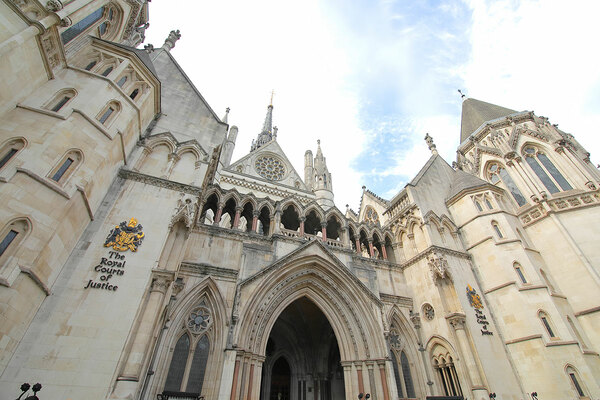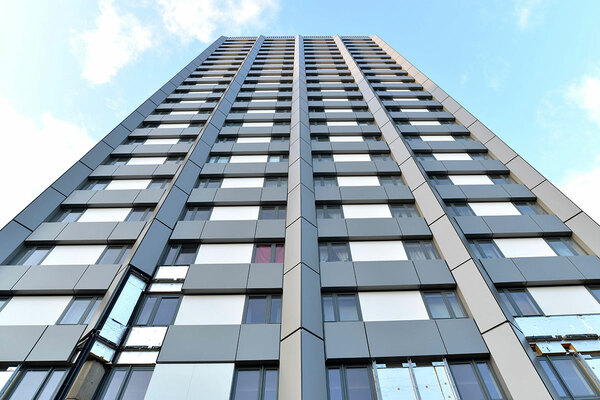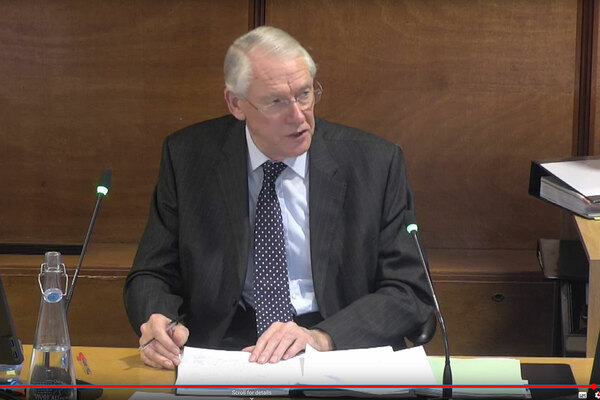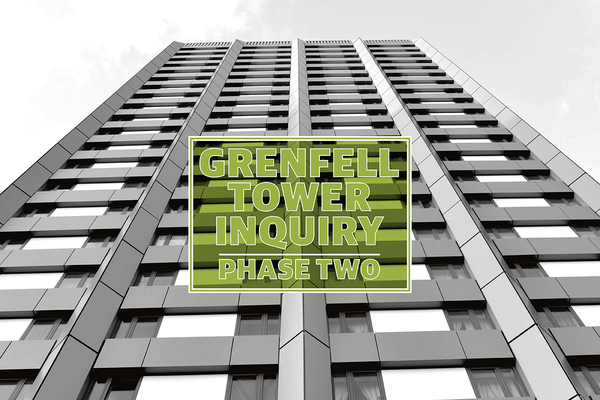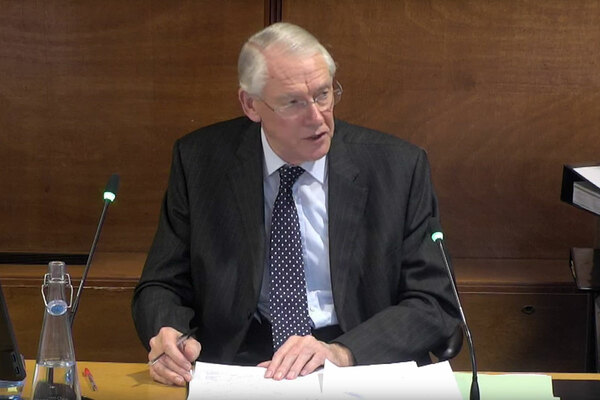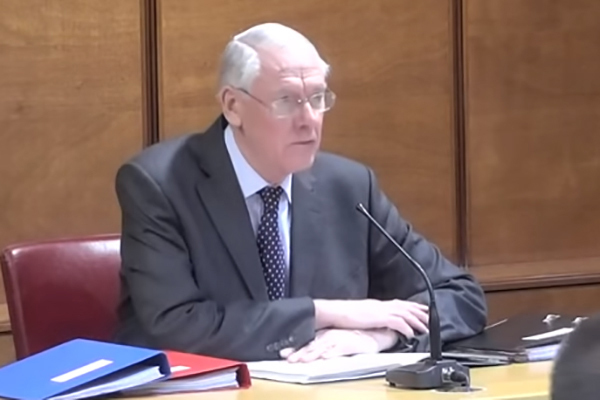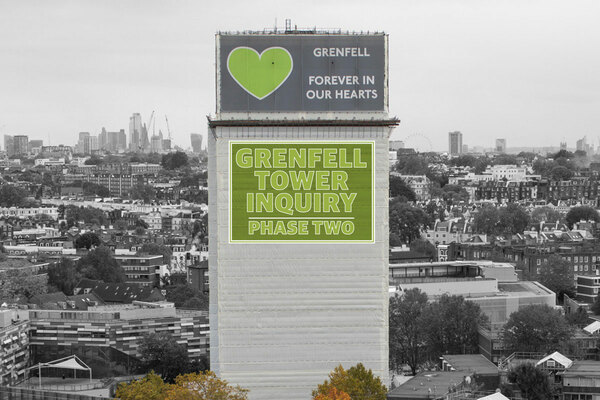Grenfell Tower Inquiry diary week two: what is the significance of the ‘immunity’ application?
Sir Martin Moore-Bick has written to the attorney general requesting protection for those set to give evidence at the Grenfell Tower Inquiry. Pete Apps explains what the move means
The second week of Phase Two was completely taken up with the 11th-hour application from KCTMO, Studio E, Harley Facades, Osborne Berry and consultant Kevin Lamb for an assurance of protection from the attorney general before they give evidence.
Monday was taken up with submissions on this issue, with the remainder of the week’s proceedings adjourned while inquiry chair Sir Martin Moore-Bick considered it. On Thursday, he agreed to make the application.
There has been substantial confusion about what the implications of this are. Here, we take a look at what it does (and doesn’t) mean.
What will the assurance cover?
If granted, the assurance will serve as a guarantee to witnesses that the answers they give under cross-examination will not be used in evidence against them at any future criminal trial.
This has been widely misreported as “immunity from prosecution” full stop – which is entirely false. Rather, the assurance would be strictly limited to any answers they give during the hearings. The evidence about which they are being asked – the emails, documents and contracts relating to the refurbishment – is still absolutely available for a future prosecutor to use.
The assurance also strictly only applies to the person giving evidence – answers that incriminate someone else could be used in a future criminal trial. There is also no protection against lying to the inquiry, as the witnesses are under oath and can be prosecuted for perjury if they are dishonest.
To give a fictional example, imagine the inquiry was considering a document that appears to incriminate Ben. Ben is called to give evidence. He then explains his actions by saying: “My boss, Bill, forced me to do it.”
Both Bill and Ben can be prosecuted: Ben on the basis of the incriminating document and Bill on the basis of Ben’s testimony. The only thing the prosecutors cannot do is rely on Ben’s answer to further strengthen the case against him.
Does this make it less likely people will be prosecuted?
This is the million-dollar question and opinion is split. The Grenfell survivors did not uniformly oppose the motion on Monday: one group represented by Michael Mansfield QC spoke firmly against it; another represented by Stephanie Barwise QC took a neutral stance, with Ms Barwise saying her clients “had understandably different and reasonably held views”.
One argument is that the undertaking could actually make prosecutions more likely. If the immunity is not granted, witnesses can dodge questions by invoking a long-standing legal principle against self-incrimination. Theoretically, many questions could be refused. But if immunity is granted, Sir Martin can compel witnesses to answer.
The Crown Prosecution Service (CPS) is also watching the inquiry closely. It is legally obliged to satisfy itself before prosecuting anyone that there is a reasonable chance of conviction.
Some believe being granted immunity will effectively force people to put their cards on the table. This would reassure the CPS that there isn’t some killer defence out there that would destroy a criminal case, which in turn could push the case over the threshold of certainty necessary to advance a prosecution.
However, others argue that criminal defence barristers could use the assurance of protection to strike out much more evidence than the basic answers or get a prosecution ruled out as an abuse of process, by arguing the CPS is relying on knowledge it shouldn’t be using, even if it isn’t specifically part of the case.
“That’s the line they will try to push, as surely as night follows day,” one experienced criminal barrister told Inside Housing. “It’s certainly what I would do.”
It is also unlikely that if witnesses don’t receive immunity from the attorney general that they would decline many questions on the basis of self-incrimination. Doing so would mean they lost the chance to explain their actions and sound an awful lot like an admission of at least some guilt.
Evidence obtained under cross-examination can also be useful for making a criminal case stand up. Part of the eventual criminal case against David Duckenfield, the senior police officer in charge during the Hillsborough disaster, was based on answers he gave at the inquiry.
In the end, we will only know with hindsight the implications for criminal prosecutions. At worst, granting immunity would raise an additional barrier that must be crossed later. But it is certainly not the end of the race.
Why now?
The timing of this application – coming out of the blue halfway through the first week of opening statements – has raised many eyebrows. The inquiry has been running for the best part of two years and no good reason has yet been offered to explain why this application wasn’t made earlier.
The most generous argument is that it was a result of last-minute nerves among the corporate witnesses. Their resolve failed as the day of their evidence drew nearer and they asked their counsel to seek some protection.
A more Machiavellian explanation is that it was an effort to disrupt and sabotage the process. Witness evidence has been put back by at least a month as a result, throwing out the carefully drawn timeline before the process has even begun.
It has also turned the narrative – at least temporarily – away from some of the astonishing evidence unveiled last week.
Perhaps the worst effect from the inquiry’s perspective has been the damage it has done to the public faith in the process. News outlets including the BBC and The Times have erroneously described the move as a bid for “immunity from prosecution”, leading many to damn the process as a whitewash or a cover-up. Ironically, this most benefits those whose wrongdoing it may eventually expose.
What’s next?
The inquiry will now adjourn until at least 24 February while the attorney general considers the application. As such, we will be pausing this weekly diary until the evidence resumes. Don’t forget to sign up to the bulletin below to stay up to date.
Sign up for our weekly Grenfell Inquiry newsletter
Each week we send out a newsletter rounding up the key news from the Grenfell Inquiry, along with the headlines from the week
Already have an account? Click here to manage your newsletters
Grenfell Tower Inquiry news stories: week two
Grenfell inquiry delayed as chair recommends 'self incrimination' plea be granted
The chair of the Grenfell Inquiry has written to the attorney general to recommend that an undertaking which would ensure that evidence given by corporate witnesses cannot be used in any future criminal proceedings is taken forward.
Grenfell inquiry delayed by 'immunity' bid from corporate witnesses
The inquiry into the Grenfell Tower tragedy has been delayed while the panel decides whether evidence given by corporate witnesses could be used against them in any future criminal proceedings.
Grenfell Tower Inquiry: phase two timeline
Sir Martin Moore-Bick, the retired judge who chairs the inquiry (picture: Grenfell Tower Inquiry)
The inquiry will be spread across eight modules, with the below timeline set out at the start of the inquiry:
Module one: 27 January to April 2020
Module one will examine the role, acts and omissions of the professionals involved in the refurbishment of the tower from 2012 to its sign-off on 20 July 2016.
Module two: 4 May to mid-June 2020
This section will examine the testing, classification, certification and marketing of key products used in the external wall, particularly the Reynobond PE 55 cladding panels and the polyisocyanurate insulation made by Celotex.
Module three: June to early October 2020
This will involve three topics: first, the complaints made by residents, particularly those relating to fire safety and the quality of the workmanship; second, the compliance with the requirements of the Regulatory Reform Order 2005 by the council, Kensington and Chelsea Tenant Management Organisation and the London Fire Brigade; and finally, active and passive safety measures in the tower. Closing statements for all the first three modules will then follow.
Module four: mid-October to mid-November 2020
This module will assess the performance of local and national government in the immediate aftermath of the fire.
Module five: mid-November 2020 to mid-February 2021
The firefighting operation will be reviewed in more detail in this section, including an analysis of training and the suitability of equipment.
Module six: February 2021 to May 2021
This module will turn the lens on central government, with a focus on the responses to previous incidents and
reports, coroners’ recommendations and things of that nature – including in respect of the building regulations and associated guidance, as well as fires and firefighting.
Module seven: May 2021
One week has been set aside for an assessment of the remaining expert evidence.
Module eight: timetable to be announced
This will assess any remaining evidence, including an attempt to establish how each of the deceased met their deaths. The bereaved and survivors have been invited to make submissions about other matters, which should be considered in this module.
The organisations involved in the refurbishment of Grenfell Tower
Picture: Jon Enoch
KCTMO: Kensington and Chelsea Tenant Management Organisation, the arm’s length management organisation responsible for providing housing management to Grenfell Tower. It was the end client which procured the refurbishment and oversaw it.
Rydon: Main contractor. It won a tender for the ‘design and build’ of the refurbishment project in March 2014, with a contract signed in October. It then held overall responsibility for the work, sub-contracting various elements to more specialist firms.
Celotex: The manufacturer of the RS5000 insulation which formed the majority of the insulation on the tower. The product is made from a combustible plastic called RS5000.
Arconic: A large multinational aluminium company, which manufactured and sold the Reynobond PE 55 cladding panels which were installed on the tower.
RBKC: As well as ultimately owning the tower, the Royal Borough of Kensington and Chelsea provided the ‘building control’ function for the refurbishment. This involved providing a completion certificate which effectively signed off the project as compliant with building regulations.
Studio E: Architect – first engaged by KCTMO as the principal designer for the wider refurbishment, it became a sub-contractor following Rydon’s appointment in 2014, working under the standard RIBA terms of business.
Harley: Specialist sub-contractor for the cladding. It was in contract with Studio E before Rydon was appointed, and then struck an agreement with Rydon for the design of the facade works.
Exova Warringtonfire: Fire engineer. Appointed by KCTMO in mid-2012 to provide a fire strategy for the building as it stood and for the refurbishment work. Three versions of the refurbishment version were produced, the last in November 2013. It provided ongoing advice after this point but was not directly engaged by Rydon.
CEP: The fabricator, responsible for cutting the panels into cassettes. CEP was one of a small number of ‘approved’ fabricators which worked closely with Arconic. Also supplied the window frames.
Max Fordham: The engineering consultant which worked for the TMO providing advice on energy strategy and sustainability. It was Max Fordham that identified Celotex insulation as a product which could meet the target insulation performance and was also thin enough to fit the design dimensions.
Kingspan: Produced and sold a smaller amount of combustible K15 insulation which was used on the tower.
Siderise: Produced and sold the cavity barriers.
Aluglaze: Produced and sold the window panels.
Artelia: The construction, design and management co-ordinator, employer’s agent and quantity surveyor, assisting KCTMO with its management of the contract.
Osborne Berry: The building contractor appointed by Harley to fit the cladding and window systems.
Kevin Lamb: An independently outsourced specialist cladding designer which provided Harley with detailed design drawings.
John Rowan and Partners: The clerk of works reporting to the TMO, responsible for site inspection and monitoring.
SD Plastering: A sub-contractor responsible for fitting the window surrounds.
JS Wright: A mechanical and electrical sub-contractor. It will have little involvement in module one.
Curtins Consulting: A structural engineer reporting first to KCTMO and then to Rydon. They will also have little involvement in module one.
Grenfell Tower Inquiry phase two previews
Picture: Getty
Inside Housing published a series of preview articles ahead of the start of Phase Two of the Grenfell Tower Inquiry on Monday 27 January. You can read them here:
What was known in central government about cladding?
What did officials know about the dangers of fire from combustible cladding, and did they act on the warnings?
Click here to read the full story
The testing and certification of materials
What tests and certificates existed for the materials used in the cladding system on Grenfell Tower, and was the system that provided them fit for purpose?
Click here to read the full story
The decision to install the cladding
Who decided to install polyethylene-cored ACM cladding on Grenfell Tower and why?
Click here to read the full story
The fire doors and windows
What went wrong with the fire doors and window installed at the tower?
Click here to read the full story
The warnings of the local community
What did residents say before the fire and why were they ignored?
Click here to read the full story
Over the course of the inquiry, Inside Housing will publish regular news updates on its progress and a weekly round-up of the key evidence and its significance for the social housing sector every Friday afternoon.

